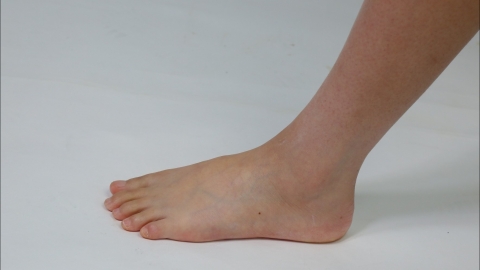Why isn't the cartilage injury on the top of the foot getting better?
Generally, the main reasons why dorsum foot cartilage injury fails to heal include continuous local stress, inadequate warmth during recovery, traumatic arthritis, gouty arthritis, and talus cartilage damage. If discomfort symptoms occur, it is recommended to seek timely medical evaluation and treatment at a正规 hospital. Specific analysis is as follows:
1. Continuous Local Stress
If sufficient rest is not obtained after dorsal foot cartilage injury, daily activities such as walking or standing continuously place stress on the foot's dorsum, impairing cartilage repair and resulting in persistent non-healing. To promote healing, reduce stress on the foot dorsum by avoiding prolonged walking or standing, wear loose and comfortable shoes, and use crutches for assistance when necessary.

2. Inadequate Warmth During Recovery
When the foot dorsum is exposed to cold environments for extended periods during recovery, cold exposure causes local blood vessel constriction, impairing circulation and reducing nutrient supply to the cartilage, thereby hindering healing. Add appropriate socks and footwear promptly to prevent foot chilling. Soaking feet in warm water can help improve local blood flow; each soaking session should last 15–20 minutes.
3. Traumatic Arthritis
Traumatic arthritis may develop following foot dorsum cartilage injury. Recurrent inflammation irritates the cartilage, worsening the damage and making healing difficult. Under medical guidance, medications such as celecoxib capsules, diclofenac sodium sustained-release tablets, or glucosamine hydrochloride capsules may be used. Additionally, minimize weight-bearing activities on the affected foot.
4. Gouty Arthritis
Elevated uric acid levels in the body lead to deposition of uric acid crystals in the foot dorsum cartilage and surrounding tissues, causing gouty arthritis. This inflammatory process interferes with cartilage repair, leading to prolonged non-healing. Under medical supervision, medications such as allopurinol tablets, febuxostat tablets, or benzbromarone tablets may be prescribed. Dietarily, avoid high-purine foods such as organ meats and seafood.
5. Talus Cartilage Injury
If foot dorsum cartilage injury involves the talus cartilage, healing is particularly challenging due to the talus’s relatively poor blood supply and limited self-repair capacity, often resulting in chronic non-healing. Under medical guidance, medications such as chondroitin sulfate sodium tablets, etoricoxib tablets, or naproxen sodium tablets may be used. In severe cases, arthroscopic repair of talar cartilage lesions or cartilage transplantation surgery may be required.
In daily life, individuals with foot dorsum cartilage injuries should ensure adequate rest and avoid continuous stress; maintain foot warmth to prevent cold exposure; control diet and reduce intake of high-purine foods; schedule regular hospital follow-ups to monitor healing progress; and avoid strenuous physical activity to prevent re-injury to the foot dorsum.




